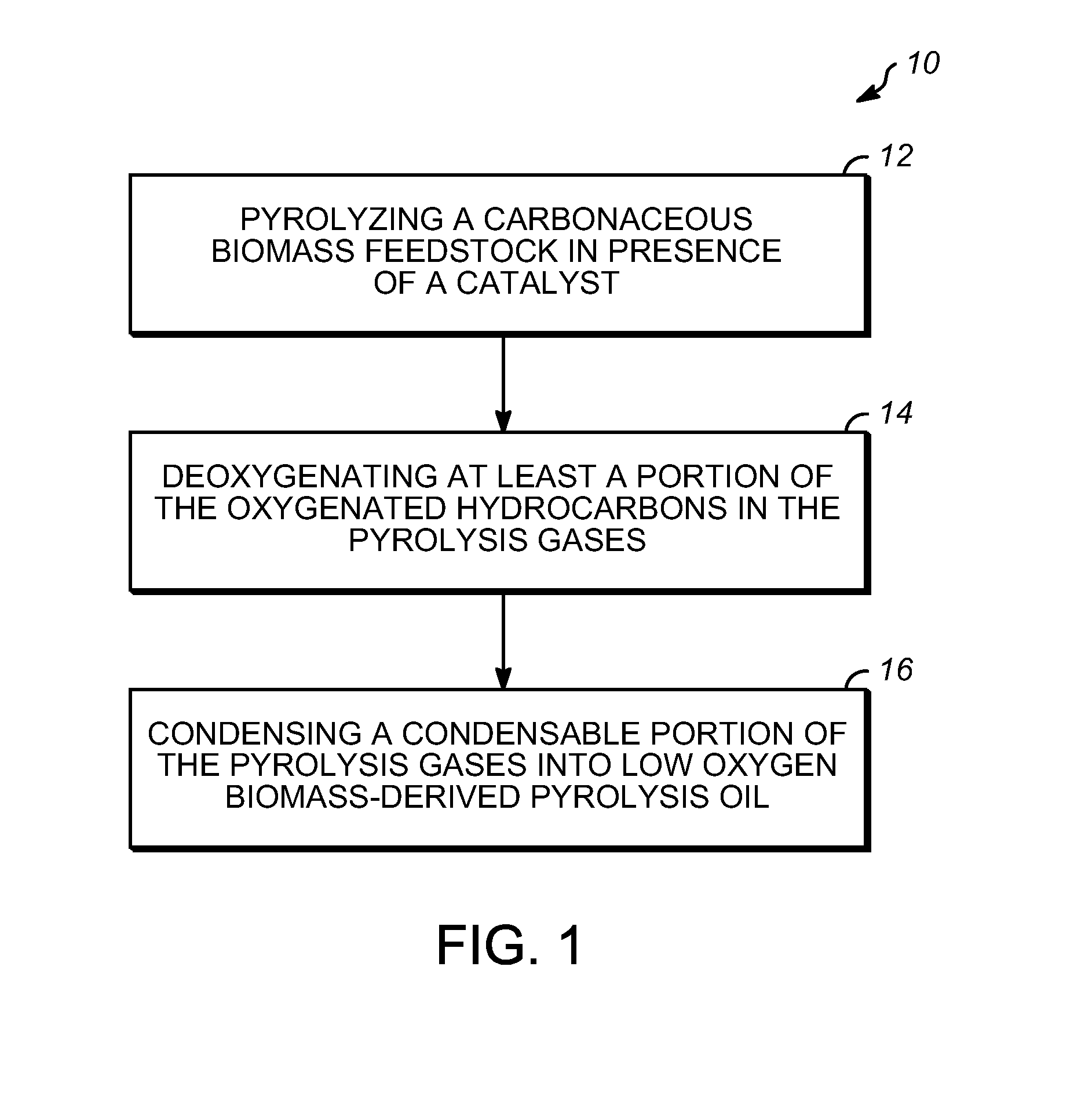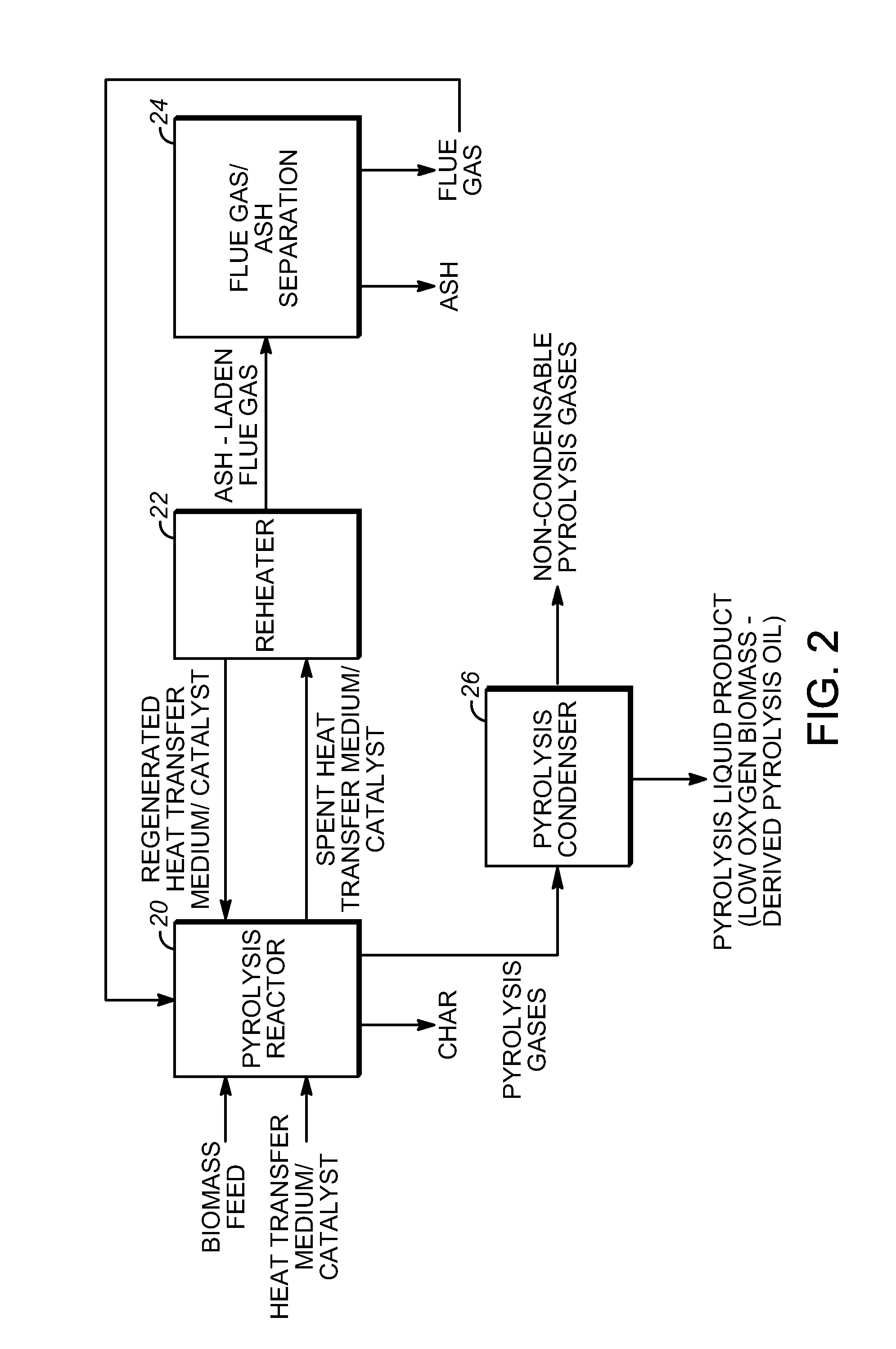Low oxygen biomass-derived pyrolysis oils and methods for producing the same
a biomass-derived pyrolysis oil, low oxygen technology, applied in the direction of hydrocarbon oil treatment products, fuels, biofuels, etc., can solve the problems of low energy density, poor thermal stability of biomass-derived pyrolysis oil, corrosive,
- Summary
- Abstract
- Description
- Claims
- Application Information
AI Technical Summary
Benefits of technology
Problems solved by technology
Method used
Image
Examples
examples
[0030]The following examples are provided for illustration purposes only, and are not meant to limit the various embodiments of the present invention in any way. Biomass in the form of oak wood pellets was pyrolyzed in a fluidized bed reactor at about 500° C. to about 600° C. A biomass to catalyst ratio of about 0.2 mg biomass to about 1.0 mg catalyst was used. The biomass was pyrolyzed in the presence of each of the catalysts A-J identified in the table below, in accordance with exemplary embodiments. The respective catalyst was mixed with sand, the catalyst and the sand being the heat transfer medium. The biomass was also pyrolyzed in the absence of any catalyst, using sand alone as the heat transfer medium. The catalysts including zeolites as the catalyst or catalytic support were prepared as indicated below and heated to about 400° C. to about 600° C. before use. The sulfided catalysts were dried at 100° C. for one to 12 hours before use. The production of selected non-phenolic ...
PUM
| Property | Measurement | Unit |
|---|---|---|
| temperatures | aaaaa | aaaaa |
| weight | aaaaa | aaaaa |
| temperature | aaaaa | aaaaa |
Abstract
Description
Claims
Application Information
 Login to View More
Login to View More - R&D
- Intellectual Property
- Life Sciences
- Materials
- Tech Scout
- Unparalleled Data Quality
- Higher Quality Content
- 60% Fewer Hallucinations
Browse by: Latest US Patents, China's latest patents, Technical Efficacy Thesaurus, Application Domain, Technology Topic, Popular Technical Reports.
© 2025 PatSnap. All rights reserved.Legal|Privacy policy|Modern Slavery Act Transparency Statement|Sitemap|About US| Contact US: help@patsnap.com



